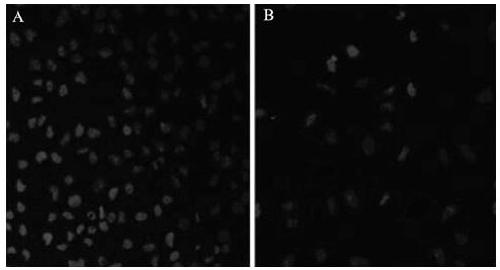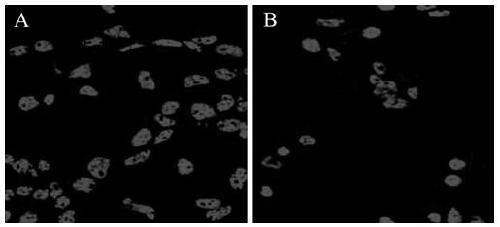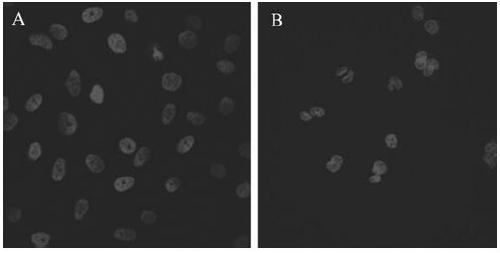An injectable temperature-sensitive hydrogel intraocular lens material with cell membrane bionics and its preparation method
A temperature-sensitive hydrogel and cell membrane technology, applied in prosthetics, tissue regeneration, pharmaceutical formulations, etc., can solve problems such as glare, post-cataract, etc., and achieve the goal of avoiding complications, reducing inflammatory reactions, and avoiding microbubbles Effect
- Summary
- Abstract
- Description
- Claims
- Application Information
AI Technical Summary
Problems solved by technology
Method used
Image
Examples
Embodiment 1
[0026] Selected monomers: the first monomer is N-isopropylacrylamide, the second monomer is 2-phenoxyethyl acrylate, and the third monomer is 2-methacryloyloxyethyl phosphoryl chol The base, the initiator is azobisisobutyronitrile. Among them, the content of N-isopropylacrylamide is 40%, 2-phenoxyethyl acrylate is 40%, 2-methacryloyloxyethyl phosphorylcholine is 19%, and azobisisobutyronitrile is 1%. . The polymerizable monomer and the initiator were mixed uniformly under the protection of nitrogen and injected into the glass mold, heated and polymerized in an oven at 60ºC for 18 hours, then the temperature was raised to 90ºC, and the reaction was continued for 6 hours. Put the glass mold in deionized water at 40 ºC for swelling balance, and the polymer material is demoulded. During this period, the unreacted small molecular monomers are removed by replacing the deionized water, and finally a temperature-sensitive polymer material that can be used as an intraocular lens mater...
Embodiment 2
[0029] Selected monomers: the first monomer is vinylpyrrolidone, the second monomer is 2-phenoxyethyl methacrylate, the third monomer is 2-methacryloyloxyethyl phosphorylcholine, The initiator is azobisisobutyronitrile. Among them, the content of vinylpyrrolidone is 40%, 2-phenoxyethyl methacrylate is 45%, 2-methacryloyloxyethyl phosphorylcholine is 14%, and azobisisobutyronitrile is 1%. The polymerizable monomer and initiator were mixed evenly under the protection of nitrogen and then injected into a glass mold, heated and polymerized in an oven at 70 ºC for 8 hours, and then the temperature was raised to 100 ºC to continue the reaction for 12 hours. The glass mold was placed in deionized water at 40 ºC for swelling balance, and the polymer was released from the mold. During this period, the unreacted small molecular monomers were removed by replacing the deionized water, and finally a temperature-sensitive polymer material that could be used as an intraocular lens material w...
Embodiment 3
[0032]Selected monomers: the first monomer is dimethylaminoethyl methacrylate, the second monomer is 2-phenoxyethyl methacrylate, and the third monomer is 2-methacryloyloxyethyl Phosphorylcholine, the initiator is azobisisobutyronitrile. Among them, the content of dimethylaminoethyl methacrylate is 43%, 2-phenoxyethyl methacrylate is 42%, 2-methacryloyloxyethyl phosphorylcholine is 14%, azobisisobutyl Nitrile 1%. The polymerizable monomer and the initiator were mixed uniformly under the protection of nitrogen and injected into the glass mold, heated and polymerized in an oven at 60 ºC for 16 hours, and then the temperature was raised to 100 ºC to continue the reaction for 8 hours. The glass mold was placed in deionized water at 40 ºC for swelling balance, and the polymer was released from the mold. During this period, unreacted small molecular monomers were removed by replacing the deionized water, and finally a temperature-sensitive polymer material that could be used as an ...
PUM
| Property | Measurement | Unit |
|---|---|---|
| refractive index | aaaaa | aaaaa |
Abstract
Description
Claims
Application Information
 Login to View More
Login to View More - R&D
- Intellectual Property
- Life Sciences
- Materials
- Tech Scout
- Unparalleled Data Quality
- Higher Quality Content
- 60% Fewer Hallucinations
Browse by: Latest US Patents, China's latest patents, Technical Efficacy Thesaurus, Application Domain, Technology Topic, Popular Technical Reports.
© 2025 PatSnap. All rights reserved.Legal|Privacy policy|Modern Slavery Act Transparency Statement|Sitemap|About US| Contact US: help@patsnap.com



